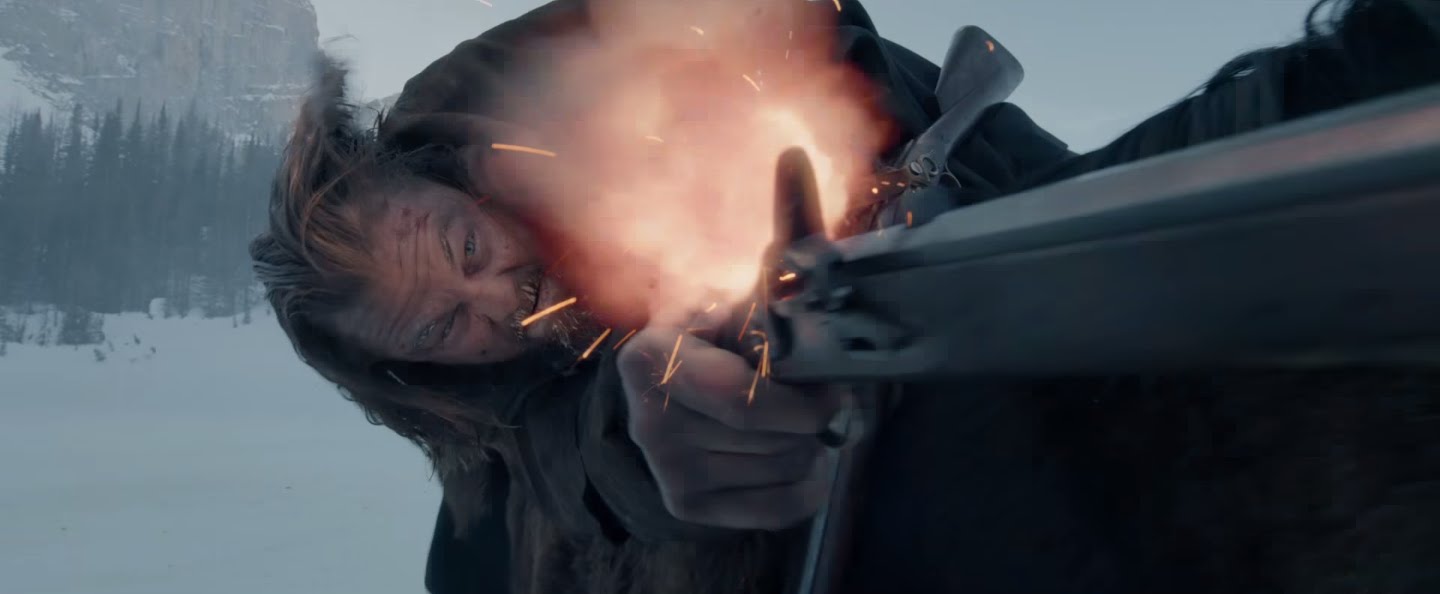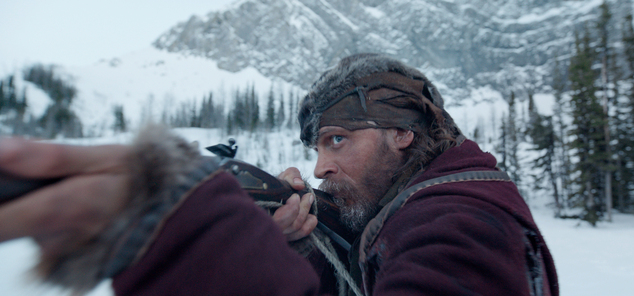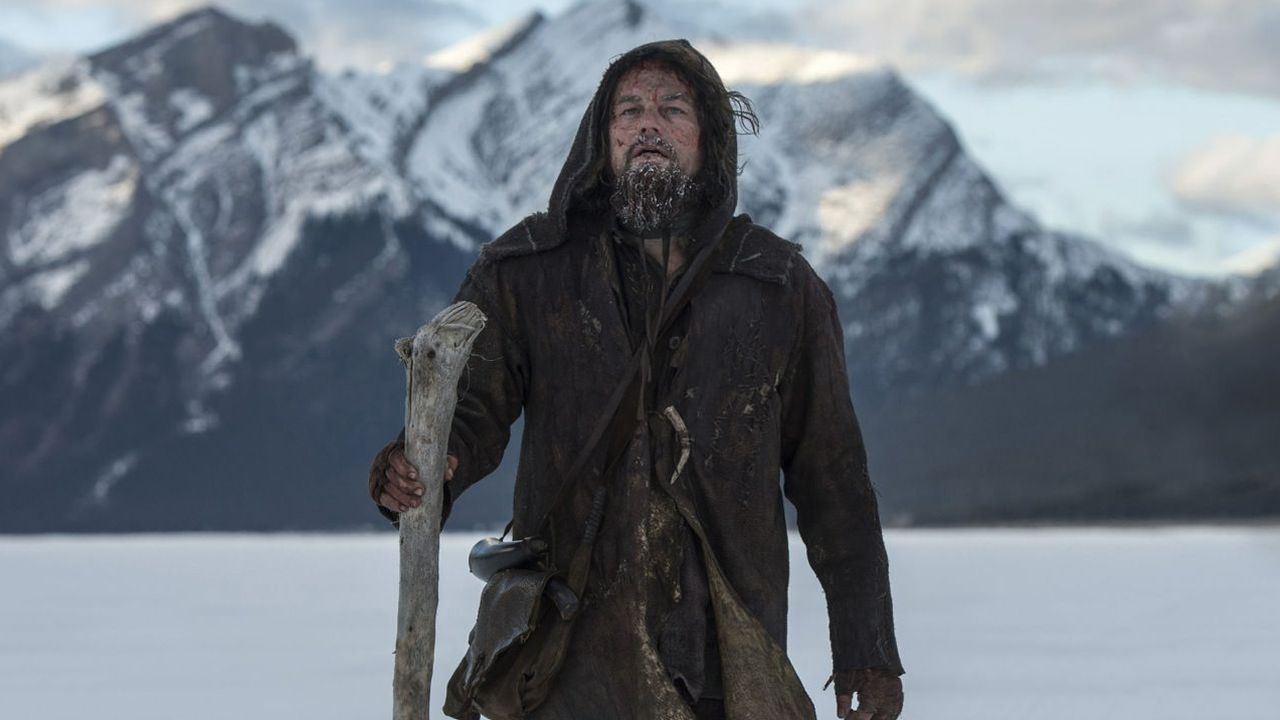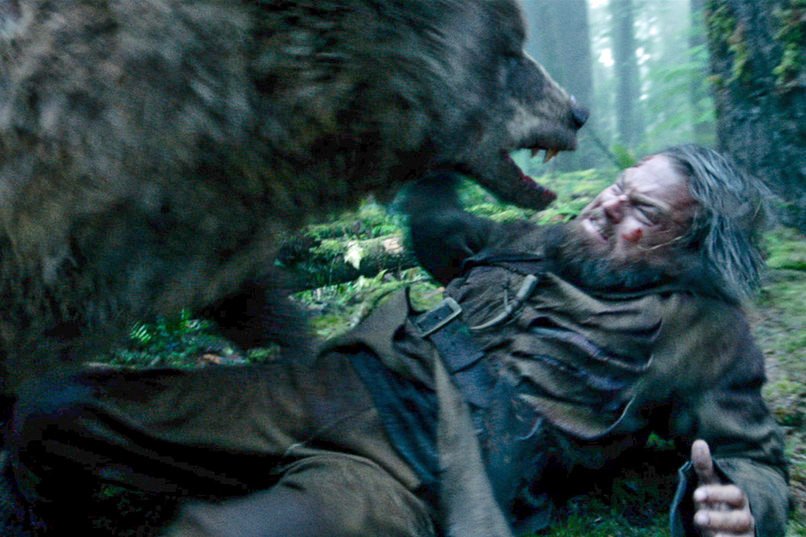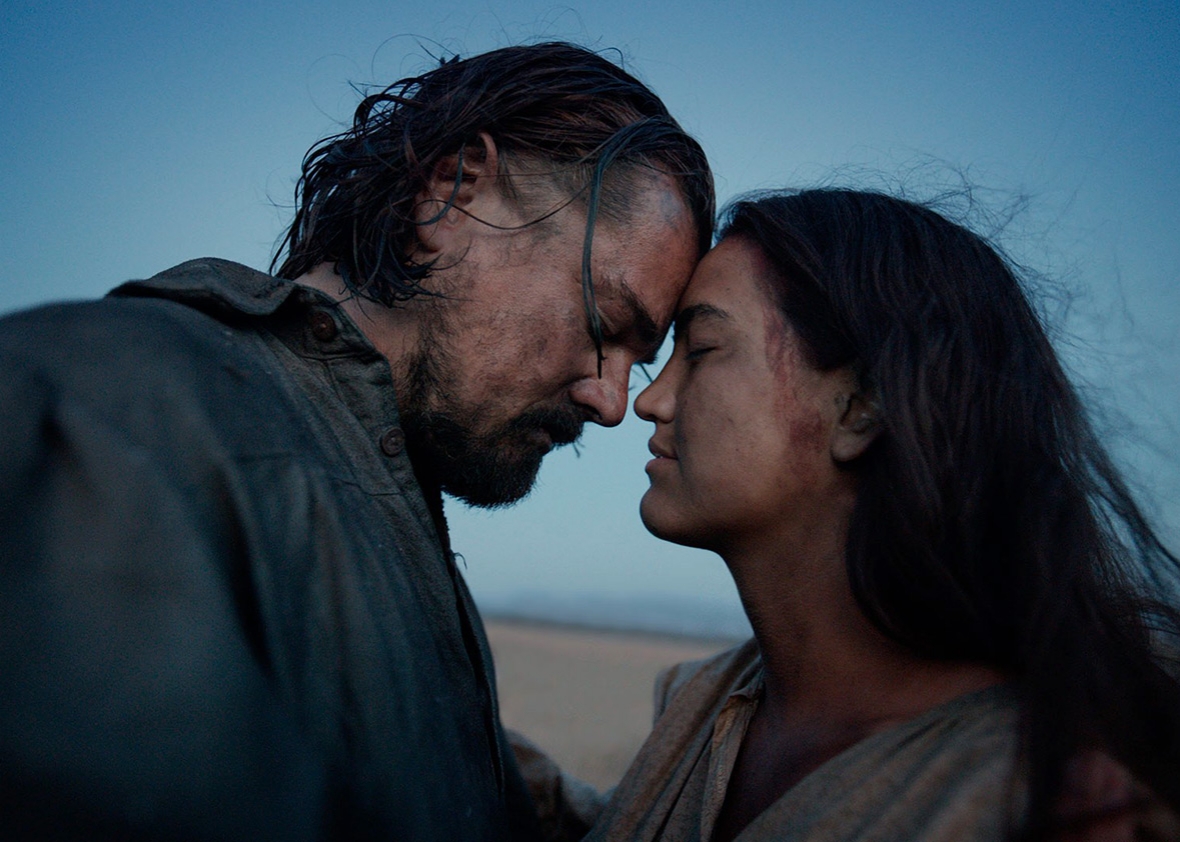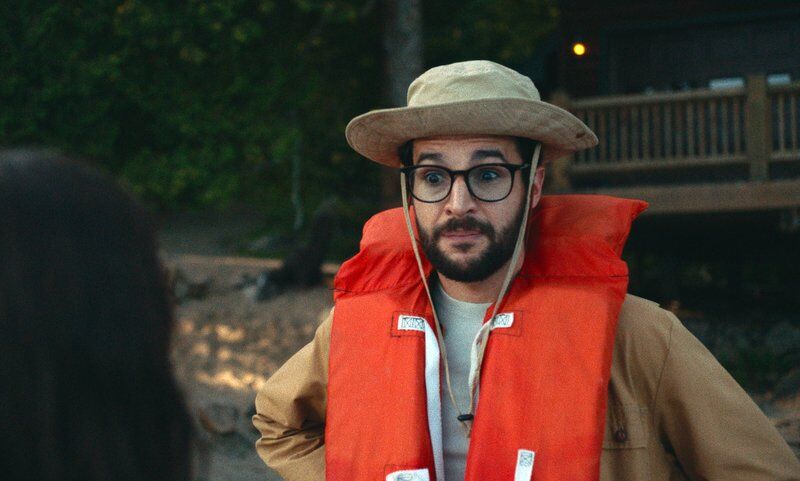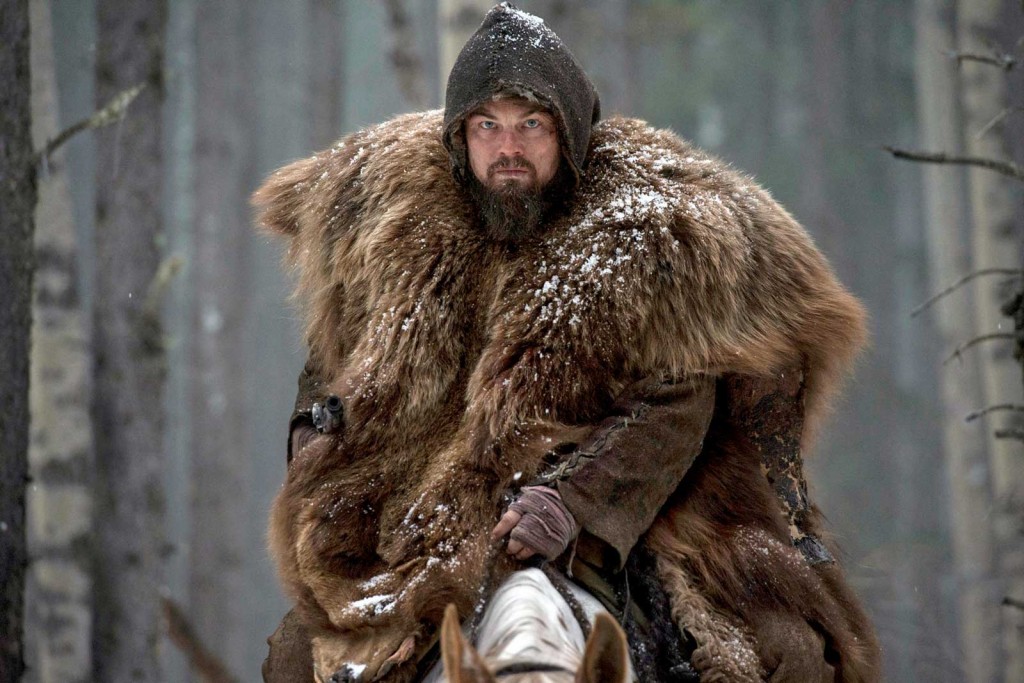
The Revenant Reviewed Explained and its Historicity Dissected
[amazon template=iframe image&asin=B01AB0DX2K]If you have yet to see the Revenant, (which, most of you won’t have the opportunity as it isn’t widely released quite yet, January 5th I believe?) this section will be safe from spoilers. I will clearly denote where I start to delve into spoilers. Because I plan to do a deep dive and dissection into the inner workings of the film and the true history of Hugh Glass. So, please watch for the blaring flashing lights and the sirens, and only continue on after you’ve seen the film. Fair enough? But it is my plan to do a very detailed vivisection of this amazing film and explain some of the deeper inner workings going on right in front of our eyes.
I’ve been talking about the incoming Revenant for quite a while now. I even went so far as to declare it the winner of the 2015 Oscars. Well, I was lucky enough to get a chance to see The Revenant even before it went wide with it’s release… (Thanks a ton Fox!) And oh, holy, cow. What a movie. But I’ll get to that in a moment. Iñárritu went so far out of his way to guarantee that the film would be available in theaters before the end of the new year, in order to guarantee a chance at the Oscars for 2015. So what are his odds there?
The Revenant’s Oscar Odds
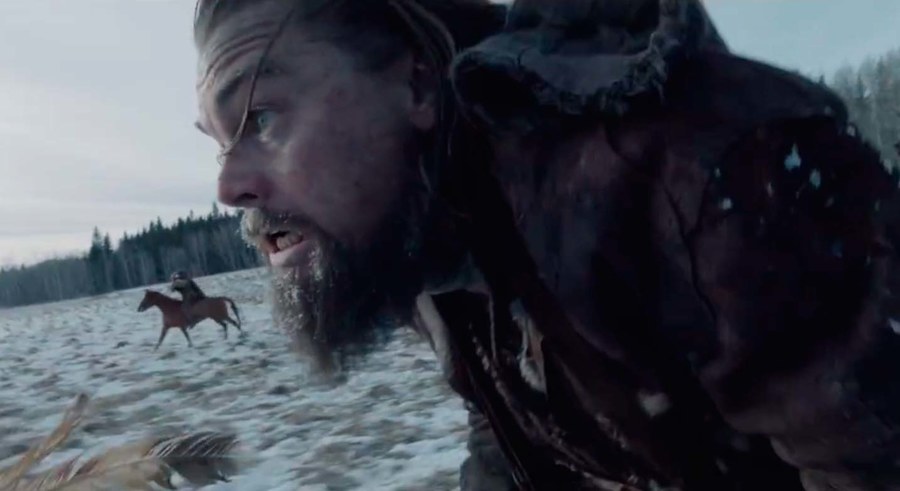
Now that I’ve seen the movie, I am even more certain than ever that Leonardo will finally get his best actor Oscar. And not only that, but it will win for Best Movie of the year as well. I am so confident I think they should just shut the Oscars down for the year this year. I’ve never seen anything like it. Here are the Oscars that I am betting that it will collect:
- Academy Award for Best Picture
- Academy Award for Best Actor – Leonardo DiCaprio (1st, will break his losing streak)
- Academy Award for Best Supporting Actor – Tom Hardy (1st)
- Academy Award for Best Director – Alejandro González Iñárritu (2nd year in a row)
- Academy Award for Best Production Design
- Academy Award for Best Writing Adapted Screenplay
- Academy Award for Best Cinematography
- Academy Award for Best Costume Design
- Academy Award for Best Film Editing – Stephen Mirrione (2nd, 1st was for Traffic)
Nine isn’t too bad. I’d guess it would take 10 or 11 in any other year. For example, The Revenant could also take the Best Visual Effects award, but there was a Star Wars movie released this same year… and there is no way on God’s gloriously green earth that anyone will beat Star Wars when it comes to visual effects. It’s not because Star Wars’ special effects are so good, but it’s because it is the one token win they can give to one of the most significant movies in the history of film. They are (and will be) the top grossing films of all time, and they are the top payer of paychecks throughout Hollywood. That should be honored somehow, right? The Force Awakens will get a nomination for Best Movie this year, but it won’t win. So Effects will be a safe bet for the new lightsaber feature.
The Revenant will also not take home the Best Score award solely because Iñárritu chose to bring in two different composers to work on the score. Although it was primarily Ryuichi Sakamoto’s score that we hear. Iñárritu is currently appealing this decision by the Academy… which he also appealed last year for his work in the movie Birdman, after he added pre-existing classical music to the score. But he failed to impress the Academy last year with his argument, and he will fail to impress them again this year. Especially in a year when John Williams appears in the docket. John Williams is the second most nominated human, behind Walt Disney himself. But he has only won 5, and his last win was for Schindler’s List. I’m betting he’ll win again. Finally breaking that drought. The Oscars are nothing if not sentimental. But regardless, Iñárritu basically was honored last year for Birdman, but didn’t receive the awards the movie should have won. Best Editing? Puh-lease. This year though, the Revenant falls in line with the sort of movie that the Academy adores to heap praise on. Historical set pieces, set in natural settings? This is a slam dunk. I promise you I’ll come back and check in to see how well I did on my predictions.
The Revenant Movie Story Overview
The basic story of this film is fairly easy to communicate, if fairly difficult to grasp emotionally. Hugh Glass and a group of trappers and fur traders were hunting throughout the Missouri territory. They are attacked for their pelts (which, APPARENTLY, are worth more than gold… because some of the things these guys do for this stupid pelts are beyond me) an chaos ensues. A few of the men get away and soon after Glass is attacked by a bear – the mother of all bears, these beast is something else – only to barely escape with his life. The group is left with a quandary on their hands. Glass, was important in their surviving this far, but what now? So the group decides to leave his son, and two others with him, until he dies. Chaos ensues through a few details that I won’t share here, and Glass’ son dies, and Glass is buried alive. Obviously Glass survives, and the rest of the film is just one big nature porn – revenge flick. One of the greatest next two hours of cinematography actually. How on earth is this going to play out? How could this possibly have really happened? All of these thoughts went through my mind, over and over again. The movie is kind of like letting someone disembowel you, and then, at regular intervals, letting them stir the contents of your intestines while you watch. (And by the way, I mean this in the best possible way.) It is a movie that demands respect. It is a movie that demands watching with eye drops, because you won’t blink for the duration. It is a truly fantastic movie in every sense of the word.
Here is the trailer for this flick – definitely a better trailer than the first one they released which told too much of the story:
See? Goodness, and light. What an extraordinarily good movie. Makes me want to head to the theater today and watch it again. Oh wait, it’s not out yet. Curses! January 5th can’t come soon enough.
The Historicity of Hugh Glass and His Story
[amazon template=iframe image&asin=1250101190]Alright, if you’d like to walk into the movie theater with nothing but the above general overview, I highly recommend you abandon this conversation at this point. We’d (what am I saying, there is only me here… I guess I enjoy utilizing the royal we?) love to have you back. But I definitely don’t want to ruin your watching experience.
The Revenant was originally a novel released in 2002 by author Michael Punke. Since seeing the film I figured I should go back and read Punke’s groundbreaking novel and see how the movie differed from the novel. And surprisingly, the book is an absolutely rip-roaring read. Punke’s tone is really quite journalistic in his approach and very even handed of the events as they happen. But one of the flaws of the book (that the movie overcompensates for) is it’s handling of the Indians throughout. The nameless Indian, watching from up above. The fact that the indians are the stand in for evil, and are the two dimensional bad guys? Seems like lazy writing to me. But otherwise the book is a fantastic read. And if you don’t mind going into the theaters with knowledge of the plot, the book would be a great read beforehand I’m guessing. I enjoyed it after the fact anyway.
But one of the single biggest differences between the novel, and the movie, is enormously significant. This one change is the entire raison d’etre of the film. And that is that Glass, had a son, and his son, was half Pawnee Indian. Blam. Just like that, we are inside the weaknesses of Glass’ thin portrayal of the Indians. The historical Glass, did spend a year with the Pawnee Indians. So maybe it could have happened that he had a son via a Pawnee wife? I went digging, fairly deeply, and came up with this first telling of the story of Hugh Glass in the Missouri Trapper. It’s an amazing read all by itself. I mean, how can you not completely flip out when reading this sort of thing?
“The varied fortunes of those who bear the above cognomen, whatever may be their virtues or demerits, must, upon the common principles of humanity, claim our sympathy, while they cannot fail to awaken admiration. The hardships voluntarily encountered, and the privations manfully endured,, by this hardy race in the excercise of their perilous calling, present abundant proofs of those peculiar characteristics which distinguish the American woodsmen. The trackless desers of Missouri, the innumerable tributary streams of the Mississippi, the fastnesses of the Rocky Mountains, have all been explored by these bold adventurers; and the great increasing importance of the Missouri fur trade, is an evidence, as well of their numbers, as of their skill and perseverance.”
Like I said, it’s a great read all by itself, and could possibly be an even better pre-read to watching the movie than Punke’s novel. But that’s just me.
The basics of the story (in the original account, the letters, the novel if not also the movie) are simple enough. A group of fur traders were moving through the Missouri wilderness. Glass and another unnamed tracker were leading the way and gathering food in advance so that the larger party wouldn’t go to bed without dinner. While scouring the woods for food Glass stumbled upon a “white bear” that tore Glass to “peases” [sic] as described by a letter about the event written by Daniel Potts. Why don’t we just let the Missouri Trapper tell you the general overview of the storyline?
“The rifle of Hugh Glass being esteemed as among the most unerring, he was on one occasion detached for supplies, He was a short distance in advance of the party, and forcing his way through a thicket, when a white bear that had imbedded herself in the sand, arose within three yards of him, and before he could “set his triggers,” or turn to retreat, he was seized by the throat, and raised from the ground. Casting him again upon the earth, his grim adversary tore out a mouthful of the cannibal food which had excited her appetite, and retired to submit the sample to her yearling cubs, which were near at hand. The sufferer now made an effort to escape, but the bear immediately returned with a reinforcement, and seized him again at the shoulder; she also lacerated his left arm very much, and inflicted a severe wound on the back of his head. In this second attack, the cubs were prevented from participating by one of the party who had rushed sorward to the relief of his comrade. One of the cubs, however, forced the new-comer to retreat into the river, where, standing to the middle in water, he gave his foe a mortal shot, or to use his own language—“I burst the varment.” Meantime, the main body of trappers having arrived, advanced to the relief of Glass, and delivered seven or eight shots with such unerring aim as to terminate hostilities, by despatching the bear as she stood over her victim.”
And while this isn’t exactly how the bear mauling goes down in the movie, it’s close enough for our purposes. Glass is laid waste by a bear, and nearly dies. The whole company is in debt to Glass for his skills, and his abilities, and so they decide that they will leave a few men back with Glass and bury him after he dies. It is then that the movie diverges most significantly with the historical accounts and it is Glass’ son that is the main driver and motivator of the movie going forward. But in the historical account, it was the fact that five men, willingly chose to live Glass behind. They took his gun. They took his supplies. And they left him for dead. Glass managed to crawl to a nearby stream, and to subsist on berries and on the water. He then began the slow 300 mile crawl back towards civilization. And it is this experience that fueled the desire for revenge, not the murdering of Glass’ son. Either way, both would be enough to make me want to kill someone. It’s almost like the movie Touching the Void in one sense. But much much more intense.
The Revenant Cinematography
Last year, my favorite movie of the year was an easy choice. It was Iñárritu’s Birdman. And a lot of that had to do with the cutting edge cinematography. The interesting editing (or non-editing?) choices. And the compelling way in which the movie was told. Similarly, Iñárritu’s Revenant has all the same draw, and more. The special effects are completely invisible in this movie. What special effects? This movie really happened. Which is both good and bad for the movie in that even amongst Academy voters they won’t recognize when they are being show special effects. For example the avalanche that Glass watching pouring down out of the mountains. I guarantee you that wasn’t real.
We see a ton of stuff in this chase scene that has got to be special effects. But what? I have no idea. Obviously the horse getting shot in the butt with arrow. But the entirety of the horse going over the cliff, and Glass with it. Had to have been special effects. I think?!? Right? Because, we don’t generally even let stuntmen fly off cliffs and into the trees. I don’t think so anyway! hahah. But I couldn’t tell you for sure that this was a special effect it was so thoroughly well embedded in the film.
Another aspect of the cinematography is how Iñárritu did the shoot. Apparently, shooting on location in the wilds of Canada is difficult at best. And it took so long to get to the remote locations that it left very little time for actual filming. The shoot was extremely difficult to pull off.
It was planned this way, to be little-by-little jewel moments; that’s the way I designed the production. That was both to create intensity in this moments, as well as the climate conditions. We are shooting in such remote far-away locations that, by the time we arrive and have to return, we have already spent 40% of the day. But those locations are so gorgeous and so powerful, they look like they have never been touched by a human being, and that’s what I needed. The light is very reduced here in winter, and we are not shooting with any electrical lighting, just natural light. And every single scene is so difficult — emotionally, technically.
But this just screams off the film screen. I have never experienced anything like it before. I’ve never seen such gorgeous panoramas or such amazing vistas. There were shots that just took your breath away. Frozen lakes and mountain vistas. Claustrophobic foggy scenes set in amongst aspen groves. Roaring rivers. Frozen, wind blasted country sides. It’s a wonder that the film crew survived the shoot, let alone the fact that Hugh Glass survived anything even remotely like it.
I found myself just shuttering down through my core at a couple of the different sections of the film. The worst, obviously, was the time when Leonardo climbs into the carcass of a horse in order to survive the coming of a storm. At first I chuckled to myself that this was a real life reenactment of Han Solo putting Luke Skywalker in a tonton on Hoth. But I quickly dispatched that thought as I watched the actor, honestly doing this very very terrible thing, right in front of my eyes. Another was the bear mauling. Someone, anyone, please tell me how they did this shoot. Because, as far as I can tell… they hired a bear, pissed it off something terribly, and then had it beat the daylights out of DiCaprio. Can’t think of another way that they got this shot. None. Man in a bear suit? Nope. CGI? Obviously not. It really is something else to watch.
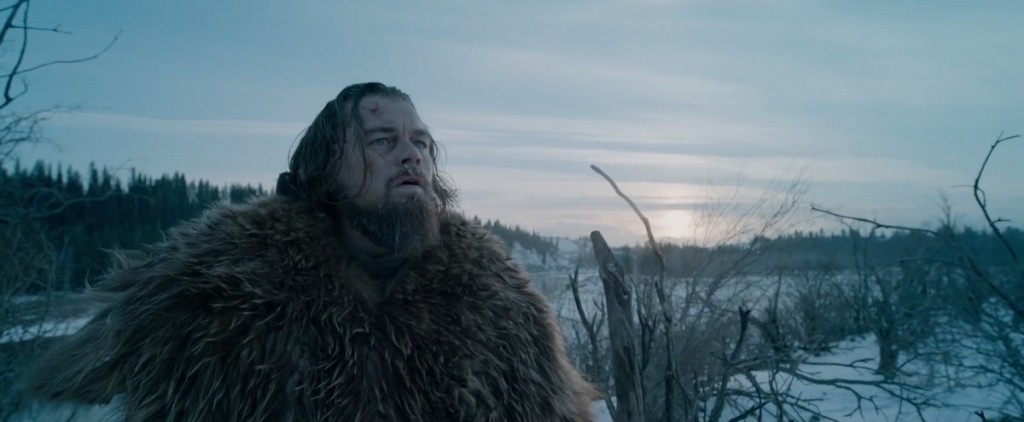
The Revenant and the Acting
The two main actors that carry this movie from start to finish are Leonardo DiCaprio and Tom Hardy. Initially, there were discussions with Sean Penn about playing opposite DiCaprio in the role of Fitzgerald. But Penn was wanting to direct a project of his own, and so he dropped out. Hardy though, brings the acting chops necessary to counterbalance Leonardo’s brilliant role.
“It was a different type of challenge for me, because I’ve played a lot of very vocal characters. It’s something that I really wanted to investigate — playing a character that says almost nothing. How do you relay an emotional journey and get in tune with this man’s angst … without words?”
Leonardo’s lines are more grunted then spoken. Most of the movie he is too injured and sick to really provide eloquent exposition. Hardy on the other hand waxes eloquent regularly as he explains his behavior away to those that are dubious of his actions. Hardy’s playing of Fitzgerald is sort of a cross between his Bane role and his role in Locke. And now that I think of it, Leonardo’s role is more like Hardy’s role in Mad Max… which is a funny role reversal now that I think about it.
Regardless, it’s interesting to think about how filming with natural light changed the way in which the acting was achieved. Leonardo said that the filming was more like a play or a ballet than anything else:
“To pull off these complicated sequences, like a ballet, movement needed to be precise,” DiCaprio says. “When it came down to that nail-biting moment to capture that magic light, every day was like putting on a mini-piece of theater. If we lost that one hour, if we didn’t accomplish what we had to accomplish, we were there the next day. And oftentimes many of these locations were very remote. So it was a very intense set, because we knew we only had one shot every single day. Otherwise … we would be back there again.”
Which makes sense seeing as though Iñárritu is the master of long takes. The whole of it pulls together into one long amazing vision of acting and visions unseen before. A nine month shoot seems almost short considering what they achieved on this film.
The Revenant & Revenge
In the movie, the ending is one of the most intense scenes ever filmed. The final revenge between Glass (Leonardo DiCapprio) and Fitzgerald (Tom Hardy) is unlike anything I’ve ever personally seen. I jumped a number of times as I watched it unfold. And ultimately, just before the final blow is struck by Glass – he considers the words of his Pawnee travel partner, that revenge is for God alone, and he chooses not to strike Glass down. Instead he shoves the man into the river and the Indians that have be trailing Glass the entire movie finally (and a bit conveniently) arrive to kill Fitzgerald and then send him on his way down the river.
But in real life, is this how it happened? No, not at all. But if you take the time to read the Revenant, or read through the letters and newspaper articles you’ll see that the story is even more exciting and thrilling than the movie at parts. But the ending is a bit less climactic. Glass spends close to a year hunting Fitzgerald down. He learned that Fitzgerald had gone on to Fort Atkins in Nebraska, and finally caught up with the man. Did he decide to savagely bludgeon the man to death for leaving him for dead in the wilderness? Nope. Seems like real life consequences for killing someone overrode fiction. Fitzgerald had become a soldier in the army, and killing a uniformed man basically meant that he’d be hanged. And so, he took back his weapons, and then went on his way. But it does not lesson the account of a man attacked by a bear and left for dead in the wilds of the early American plains. On the contrary, it makes me want to read more about the man even more.
Glass’ Final Days
All this made me very curious as to what really happened to Glass. I found this quote out on Wikipedia, that I quickly corroborated in a few newspaper articles of the times, specifically the Milwaukie Journal, wherein a visitor at Fort Union shared such an account of Hugh Glass’s death.
“Old Glass with two companions had gone to Fort Cass to hunt bear on the Yellowstone, and as they were crossing the river on the ice, all three were shot and scalped by a war party of 30 Aricaras.”
Seems like the man was destined to die at the hands of Indians eventually, regardless of our desires at Political Correctness. Personally I think there should be several different memorials to this larger than life giant of a man. Ten years out on the icy plains, and still surviving? Amazing. Surviving multiple run ins with hostile indians? I saw we create a Gofundme page and get statues erected immediately. But even with the movie diverging significantly at the ending, I still think the movie is a gorgeous portrayal of Glass’ life and adventures.
The Revenant Explained
There are though, a few areas wherein the Revenant wanders off the reservation from an inexplicability standpoint. The main area that was tough to understand at first for me was Glass and his relationship with his wife, the Pawnee Indian. Most of this relationship is told during wild eyed crazy flash backs that just didn’t make sense at first. But if you flip back through Glass’ real history and cobble it together with what we know from the movie we can get an idea of what happened. It is true that a half a dozen years earlier he spent a year with the Pawnees. He was moments being killed via immolation. A white man next to him was killed in such a fashion, but when his time came, Glass pulled vermillion from his pocket and calmly handed it to the chief. And just like that, Glass was spared. Hugh Glass then lived with his Pawnee captors for several years, wherein he married a Pawnee woman. I wasn’t able to find much more about her from the History books at all.
But the movie would have us believe that Glass’ time with the Pawnee Indians ended with an attack on their village. And it was during this time that his wife (whom he apparently loved very dearly) was killed. Which could have been the case, but there is no information about her at all that I could find anyway. The movie then carries the narrative of the father and the son forward, which brought them to join the fur trappers. Some of these scenes between Glass and his Indian wife, and his recently killed son are some of the most interesting and most curious of the movie. There is a scene where Hugh is standing in the ruins of a church and he is holding on to his son for dear life. But when he comes to he is holding on to the base of a tree that had grown in the center of the church. And while these scenes are complicated, I think we can see clearly enough that Hugh Glass’ wife and son visited him when he needed them most. When he was dehydrated, and bleeding out. When he was famished and out of his mind with fever. These scenes definitely depict the past and present in very interesting ways to the viewer. Both telling of his past, as well as telling of his current delusional state. Are there other sections of the film that still baffle you? Comment and we’ll get them answered and the post updated right away. But for me, those were the areas that made me really think hard during my first viewing.
The Revenant Conclusion
The movie is worth a second and a third viewing. And all the Oscars inevitably bestowed upon it won’t be enough to account for the crazy shoot, and the low box office (anything this movie takes in will be too low for it’s amazing quality). What were your thoughts on the movie? I’d love to hear more about what you think. Definitely didn’t mean to go on for over 4,000 words. But this movie was definitely worth it. Definitely a fantastic viewing experience that I will highly recommend to anyone I come across that hasn’t yet seen it.

